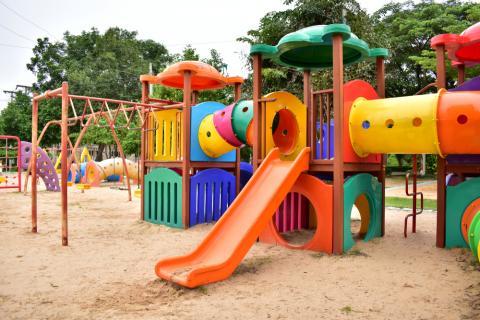
Whatever our fitness levels, we want our kids to be fit and healthy kids. So here are some tips for us parents to achieve just that and more…
However couch potato-ish we might be as individuals, as parents we want our kids to be better than us. We want them to achieve all that we couldn’t, and we try to do whatever it is that we can to remove any obstacles in their way. So, we want to raise fit and healthy kids.
This fitness begins early on though and takes some time in doing. You cannot expect to suddenly turn a lazy 10-year-old into a sprinter, or a TV freak into a biker—or a gamer into a cricketer! You get the picture, right? How the kids turn out largely depends on the kind of lives we lead. If we are lazy, bad eaters and prefer to take the car even two blocks down instead of walking it, we are setting the worst examples possible. Obviously, healthy eating is a big part of it—but here, we are going to talk about the fitness steps that we can take to raise healthy kids. For kids to consider fitness a natural part and parcel of life, we need to start taking baby steps now and lead by example and get active—starting now. Here are a few tips and tricks and the way ahead—and as a fringe benefit, your kids will start loving nature, too!
The Daily Stuff
The most significant changes are very often the small ones you make on an everyday basis…The first thing to do is get as active as you can and ditch the car in favor of the feet—market runs, grocery grabs—try and walk towards these everyday chores, especially if they are just a hop, skip, and jump away.
- Get into a decent routine with enough sleep: Children usually need 8-11 hours of night-time sleep, depending on their age—a routine helps them clock the needed hours and wake up fresh in the morning.
- Reduce tech time: TV, mobiles, laptops or gaming—set firm rules about the usage, curbing everyday exposure to this—for younger children do not let it exceed an hour at most. This will ensure they have enough playtime.
- Incorporate everyday exercise: Grab your kids, literally if you have to, and get in 30 minutes of exercise with them. You may have done your gymming or yoga in the morning, but make an evening habit with them as well. It could be a walk, a run, a bike ride, swimming, walking the dog, dancing to peppy tunes, playing ball, hiking, gardening, treadmill walking (for kids age 12 and above), yoga—make use of all the resources you have around and the ones that are easily available and get the entire family to pitch in. And remember, you can do something different each day to keep the kids interested.
The Weekly To-Do List
Once your Monday-to-Friday routine is set and working smoothly, it’s time to rethink the weekends.
- Keep one half-day of the weekend free: Indulge in some family “fitness” time. This means a couple of hours’ worth of physical exercise—hit the pool, get onto that hiking trail, clean the bathrooms, weed out the backyard, go on a biking picnic, go to a park, get those dusty badminton rackets out—you get the idea. It has to be long and a little tiring, and can then be topped with a casual and reasonably healthy take out.
- Again, restrict tech time: Staring at screens, be it the TV, laptops, or smartphones, means you are heading, or rather letting, the kids head to a headache. Even on weekends, restrict usage to two hours maximum, with breaks in between.
- Clean up means activity: Weekends are a good way to make the kids move by running errands: so they could clean out their room or even just a few drawers, help you scrub the kitchen or bathroom, rake in all the dead leaves—entice them with monetary rewards if you have to, but make sure they do move their butts. (And move yours as well!)
Monthly Make Sures
- Fun and fit holidays: If your lifestyle and budget so permits, head out for a fun weekend out every month. To keep the money balanced, you can hit a luxury stay every quarter, but for the other two months you rough it out camping, trekking, hiking and basically getting the whole family to move.
- Have a tech-free day: One day of each month is a tech-free day—this is the day there is no TV, no computer, no gaming, and no smartphone usage (except to receive an important phone call or so). Spend this day with each other, with pets, with nature and maybe even doing some DIY creative stuff around the house.
- Every month, pick up one labor intensive thing to do: Paint a wall, retile the floor, polish the furniture—and get your kids to pitch in as much as they are able, keeping their age and safety in mind.
Finally the last and most important tip: lead by example. Do not sit in front of the TV eating chips, ordering the kids to run an errand or “go play outside.” If you want them to play outside, go outside yourself and sit with them. Younger kids will naturally indulge in free play, but a vigilant eye and seeing the adults move about in natural space encourages them to do the same. The more active you are as a parent, the more active you can get your kids to be. And don’t let any physical limitations that you have ever get into the way of your child’s fitness. Happy family activities to you!








